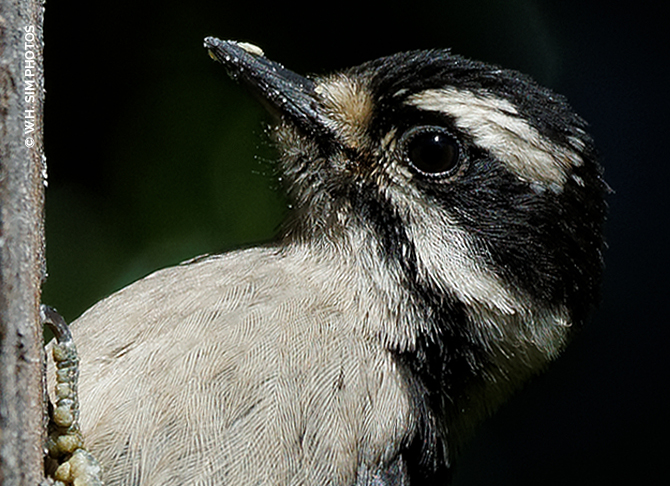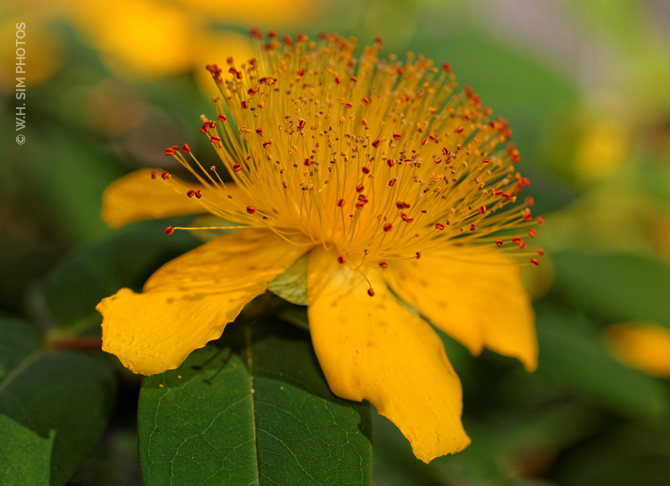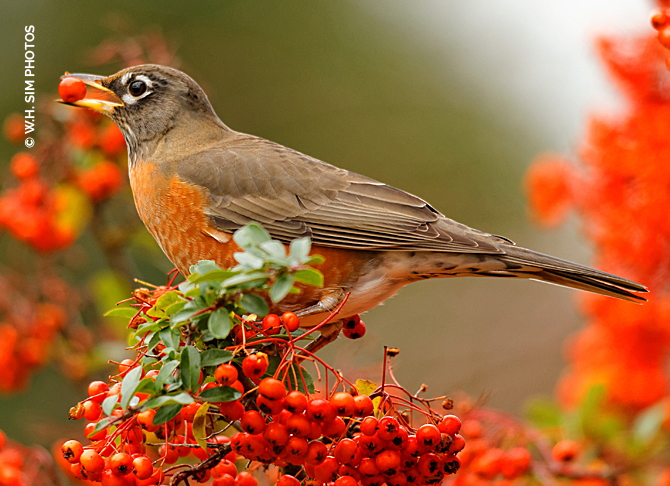NOTE: I was recently inspired by light.co to write a blog post that addressed how my photography and style had evolved alongside technological advancements in the field. This opportunity also gave me the chance to explore the “before” and “after” images of the past three years, and assess how my approach to photography has changed within that period of time.
Before becoming the owner of my first (and to date, only) camera, a Canon EOS 6D full frame DSLR camera, in April 2014, my only prior experience with digital camera technology was limited to (borrowed) point-and-shoot models. I had never shot with any setting other than Auto, and I did not have any experience with removable lenses.

then: female Downy Woodpecker (Kodak EasyShare Z990 (fixed) 66mm lens)

now: female Downy Woodpecker has a sunbath on the suet feeder — which let me capture the details of her feathers (Canon 6D + Sigma APO DG OS HSM 150-500mm lens)
With the Canon EOS 6D, I had many more megapixels at my disposal (21 vs 12 for the Kodak EasyShare Z990), but more importantly, the former also had a significantly larger image sensor (35mm vs 11mm of the Z990), which would give me the potential to take photos of amazing quality and detail. I wasn’t prepared for the learning curve. DSLR technology made DOF, exposure speed, and ISO (to name a few settings I didn’t really have or cared to know with a point-and-shoot camera), parameters that could be individually varied to my heart’s desire. There was no fast and easy way for me to know what the optimum settings were under a given set (or sets) of conditions. Lots of practice, with plenty of trial and experimentation (some purposeful, some accidental) under ideal and less-than-ideal ambition lighting conditions, was the only way to build a familiarity with these settings.
 forgetting to change aperture, ISO, and exposure settings for this shot led to the isolated closeup of this shaga flower (Canon EOS 6D + Canon EF 100 f/2.8L macro lens)
forgetting to change aperture, ISO, and exposure settings for this shot led to the isolated closeup of this shaga flower (Canon EOS 6D + Canon EF 100 f/2.8L macro lens)
More than 50,000 shots later, I’ve moved from shooting in JPG (processed 8-bit image format) to RAW (unprocessed 24-bit image format), and learned how to post process images. Although RAW support was offered on the Kodak EasyShare Z990, it wasn’t until I had my Canon EOS 6D for almost a year that I decided to venture into RAW territory. Discovering that I had the ability to fine tune a whole host of image attributes, including curves, levels, exposure, toning, saturation, and white balance, and having substantially more image information at my fingertips, can save an underexposed (or overexposed) image.

heavily underexposed mid-range image of Pine Siskin
(originally shot in RAW, and converted to JPG with no image adjustments)

post processed JPG image of Pine Siskin
(originally shot in RAW, and converted to JPG with several lighting, tonal adjustments)
Mastering the mechanics of photography went hand in hand with developing my style. My second favorite lens, a Canon 100mm prime f/2.8L lens, made it possible for me to capture the world of the miniature and get closer than close–something I could only dream about with a Kodak EasyShare Z990.

my first macro of a St. John’s Wort
(Canon EOS 6D + Canon EF 100 f/2.8L macro lens)

featured in National Geographic’s YourShot Daily Dozen of June 26, 2015 – my second, even closer macro of St. John’s Wort (Canon EOS 6D + Canon EF 100 f/2.8L macro lens)
I’ve grown to like the Manual mode setting because I can tweak exposure speed, ISO, and aperture independently, and the bulk of my photography involves wildlife subjects whose often spontaneous behaviors and movements aren’t suited to Auto mode. Having said that, having an advanced arsenal of equipment and features at your disposal doesn’t guarantee a sharp or detailed photo; I can take a blurred photo just as well with a DSLR camera as I can with a point-and-shoot camera. It’s the photographer who takes–and makes–the photo, not the camera. In the case of wildlife, that involves getting closer to the subject(s) in such a way that does not spook them or make them uncomfortable. Having a 500mm telephoto lens helps to capture details (without being overly intrusive)– something a significantly shorter fixed lens cannot accomplish.

then: a distant shot of a male Tree Swallow at the Reifel Migratory Bird Sanctuary in 2014.

now: male Tree Swallow giving me “the look” that says this is his nestbox at Iona Island in 2016.
I’ve never relished the thought of hauling around a tripod on my birding adventures, which can run to 7 hours or more a day. Patience is a requirement with wildlife photography. I rarely use teleconverters and flash, and I have never used blinds and camouflage gear, but I learned to approach my subjects as quietly and calmly as possible (or, wait for them to approach me). Keeping my ear to the ground in the local birding forums helps me plan my visits accordingly to maximize my opportunities of photographing my intended subjects.

then: male American Robin, taken from 25 feet away through glass (Kodak EasyShare Z990)

now: female American Robin on the pyracantha bush, taken from about 25 feet away (Canon EOS 6D + Sigma APO DG OS HSM 150-500mm lens)
In the past 2 years, I’ve gone from taking photos to telling stories with my camera. I’ve learned that changing the angle at which I shoot is the difference between a dramatic pose and an ordinary one. Shooting from an unconventional position (for example, upside down or at an angle of 25 degrees) can also yield some interesting results. Shooting from my subject’s point of view can really give my viewers a bird’s (or bee’s) eye point of view. Never being afraid to get close to my subjects was helped tremendously with both my macro and telephoto lenses.

my first outing with the macro lens enabled me to track and photograph a tiny honeybee on a cluster of tiny California Lilac flowers (Canon EOS 6D + Canon EF 100 f/2.8L macro lens)

a profile shot of a young and restless male Golden Eagle
(Canon EOS 6D + Canon EF 100 f/2.8L macro lens)

getting low to the ground for this mixed winter flock of Dunlins and Sanderlings (Canon EOS 6D + Sigma APO DG OS HSM 150-500mm lens).

detailed, close cropped shot of a female Rufous Hummingbird head and feathers.
(Canon EOS 6D + Sigma APO DG OS HSM 150-500mm lens)

a Bald Eagle sends hundreds of wintering ducks into flight at Delta’s Boundary Bay Regional Park
(Canon EOS 6D + Sigma APO DG OS HSM 150-500mm lens)
 making contact with the mesmerizing golden eyes of a Spectacled Owl
making contact with the mesmerizing golden eyes of a Spectacled Owl
(Canon EOS 6D + Sigma APO DG OS HSM 150-500mm lens).
I’ve also transitioned from burst mode shooting to selective clicks of the shutter to capture my subjects in action. As far as timing the shot is concerned, quality means more to me than quantity (not to mention that shooting in burst mode fills up memory cards faster, especially when you’re shooting in RAW). Action photography was a bit more challenging with point-and-shoots, as the shutter speeds tended not to go as high (a Canon EOS 6D is capable of hitting 1/4000 speeds, but newer models can even go up to 1/8000 of a second — which will freeze hummingbird hawk-moth wings).

then: my frenzied attempts to photography my first Anna’s hummingbird in flight at VanDusen Botanical Gardens in 2014 using a Kodak EasyShare Z990 in Auto mode.

now: freezing the wings of a female Rufous hummingbird as she feeds from the anise hyssop in 2016 (f/6.3, 1/1250, ISO 500) (Canon EOS 6D + Sigma APO DG OS HSM 150-500mm lens).
There is still lots of unexplored ground for me to discover. I have yet to get my feet wet with astrophotography, long exposure photography, and landscape photography. Right now, though, the spontaneity of wildlife and nature photography challenges me so completely and on so many levels.
Visit the light.co website and check out their newest offering, the Light L16. Will what this 52 MP camera promises to deliver make standalone DSLR camera users rethink the image quality of compact cameras? You be the judge.
MY ZAZZLE WEBSITE www.zazzle.com/walkswithnature
ON FACEBOOK www.facebook.com/whsimphotography
ON TWITTER www.twitter.com/whuisim
ON GOOGLE+ plus.google.com/u/0/+WHSIM

You are so clever understanding all that tricky stuff about cameras. All I know is that you take startlingly good pictures and I love looking at your posts.
LikeLiked by 2 people
as always, thank you for your kind words, Susan! 🙂
LikeLike
Beautiful photographs.
LikeLiked by 1 person
thank you, Gigi! 🙂
LikeLike
Fantastico, sono di una bellezza straordinaria!!!
LikeLiked by 1 person
many many thanks, Patrizia! 🙂
LikeLike
What a sweet hummingbird.
LikeLiked by 1 person
the very colorful Rufouses have finally left (our last sighting was on Sept 18), and the Anna’s have once again resumed their battles … them and all the fall backyard birds! 🙂
LikeLiked by 1 person
How far you’ve come in a short period of time. It gives the rest of us hope!
LikeLiked by 1 person
thank you, Eliza! your work is pretty darned amazing!! 🙂
LikeLike
Thank you! Still, I wish I had your equipment!
LikeLike
Wonderful post that clearly shows your evolution as a photographer. Your skills have grown in leaps and bounds from not only a technical perspective but also from an artistic perspective. I look forward to more amazing photos in future posts.
LikeLiked by 2 people
wow! thank you, Mike! 🙂
LikeLike
They are wonderful pictures.
I wish you a beautiful Sunday
LikeLiked by 1 person
thank you, Hervé! have a great week.
LikeLiked by 1 person
You have definitely grown as a photographer. Wonderful photos! I agree that the outcome depends just as much or more on the photographer than it does the equipment.
LikeLiked by 1 person
oh yes! it takes heart, soul, diligence, and determination to create images which will inspire. 🙂
LikeLiked by 1 person
Your work is stunning! Thanks so much for the information. Makes me want another telephoto lens .. The shot of the eagle with a macro is amazing. You must have been close ..
LikeLiked by 1 person
thank you, Julie! you’re quite right … I almost had to back up when the handler brought that young Golden Eagle by. he was such a restless young lad — getting him to “hold still” for a pose was quite challenging!
LikeLiked by 1 person
What a nice Photos and Infos! Hope to have a post like this too, though its only my first year on DSLR photography.
LikeLiked by 1 person
thank you! it’s now my third year with a DSLR camera, and I’m still learning! 🙂
LikeLike
Since you give us so many great turns of phrase in your texts here, it’s only fair that I share my thoughts with you at least once in a while! This is a particularly marvelous post. I love that you show your process and share your technical details consistently, but this kind of a ‘retrospective’ and introspective post is particularly inviting and useful—and inspiring—for me. I have zero technical knowledge about photography (and only a point-and-shoot to use it with), so cameras and even all of the lovely digital editing/post-processing tools in the world can’t make me a great photographer. But I love to keep trying. I guess the diligence you mention is the only truly useful tool I have in hand, and I do continue to love looking for the One shot that will please me on any outing. Perhaps someday I’ll be lucky enough to learn some genuine photography chops, but in the meantime, I love coming to places like your blog and relishing what the real pros can do!
Cheers,
Kathryn
PS—all of your Vancouver-area references make me supremely homesick for the PNW, but I like you and your work/words enough to forgive you! 😉 😀
LikeLiked by 1 person
Kathryn,
Many thanks for your kind words! I love your foodie Tuesday posts … your images leap off the page with the same intensity as your accompanying commentaries!
You wouldn’t miss the crazy weather wreaked by the Polar Vortex on the Pacific Northwest this winter, which has given us snow, ice, and a prolonged cold snap of sub-zero (sometimes double-digit) temperatures (the coldest, I hear, in almost 20 years) that are more typical of the North American Midwest and East Coast!
Cheers and thank you for visiting!
Hui
LikeLiked by 1 person
Yes, we do know about the weird weather…much of our family is still around the Seattle area, and we were even up there during one of the mildest and least odd periods of the season since we went up for my in-laws’ mutual 90th birthday party over the holidays. And Canada has been generally hard hit, I know; my husband conducted Pro Coro Canada in Edmonton for a dozen years, and that home-away-from-home of ours was always mighty cold in winter, but has had its own brand of intensities off and on this year, as we hear from our friends there. Having been in Texas, ourselves, for these 7+ years, I’ve gotten used to a whole different brand of weird weather! But barring any big surprises, I expect we’ll gladly come back Home to the northwest when retirement comes. So many beautiful birds, beasts, and natural wonders of all kinds. I’m so glad you share them with us!!
K
LikeLiked by 1 person
Kathryn,
You’re welcome! I’m not surprised to hear about Edmonton’s intensities — winter temps can drop to -30C there in the day time (been there, but never at that time of the year)!
Congrats on your in-laws hitting their 90th birthdays! Wow, what a tremendous milestone!
I think Texas would be a great place to visit. The wildlife there must be so different from what we see here (especially the birds)!
H
LikeLiked by 1 person